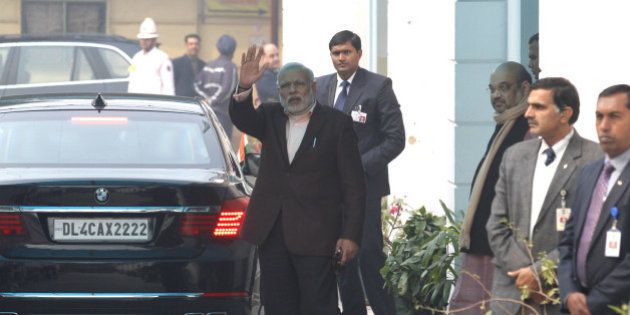
Prime Minister Narendra Modi's first policy announcement in the new year was to replace the decades-old Planning Commission with a government think-tank called NITI Aayog. Critics said that this is old wine in a new bottle.
NITI is an acronym for National Institution for Transforming India. Modi tweeted that NITI will ensure higher participation of state governments.
That's important because the Planning Commission (Yojana Aayog) was criticized as being too bureaucratic and not consulting states enough while allocating resources. Former roads minister Kamal Nath blamed it for delays in clearing projects. Former Prime Minister Manmohan Singh had also called for restructuring of the institution.
Including states at an early stage of national policymaking is surely a step in the right direction. Making it a think-tank without powers to allocate funds is also a step forward. It will now be the finance ministry's job to manage funds for various projects. Here are five main differences between the two bodies:
There are several similarities as well. Regional councils seem similar to consultative panels that were constituted by the Commission when differences cropped up between the centre and states. The prime minister will remain the ex-officio chairperson of the new organization, retaining the same position as in the Planning Commission.
The Planning Commission was set up by the Nehru government sixty five years ago, and was inspired by similar structures in the erstwhile Soviet Union. The five-year plans were also a result of that and have continued after the government changed the old socialist policy to liberalization in 1991.
"The idea to create an institution where states' leaders will be part and parcel of the collective thinking with the Centre and other stakeholders in formulating a vision for the development of the country is right on as compared with the previous structure, where a handful of people formulated the vision and then presented it to the National Development Council (NDC). This was not entirely absorbed and adopted by the latter," said former Planning Commission member Arun Maira.
Opposition parties say that such differences do not amount to much. "The Planning Commission used to plan policy. I don't know what is the government trying to do by merely changing the nomenclature from Planning Commission to Neeti Ayog," said Congress spokesman Manish Tewari.
Maira said NITI Aayog might still be able to make a difference, but that will require the right people in the team. "It will need people who are good at designing participative processes and practising them, else we will be back to square one."